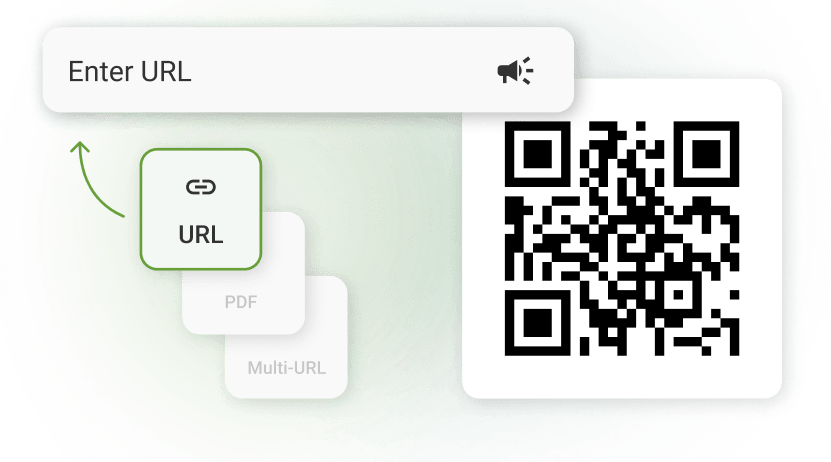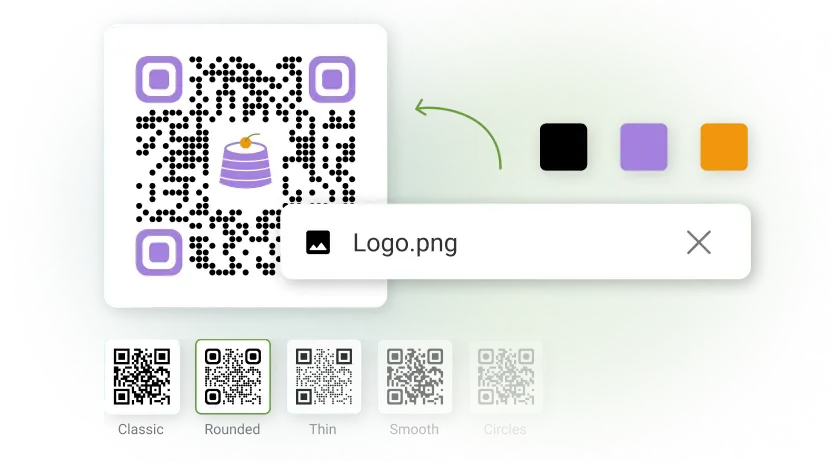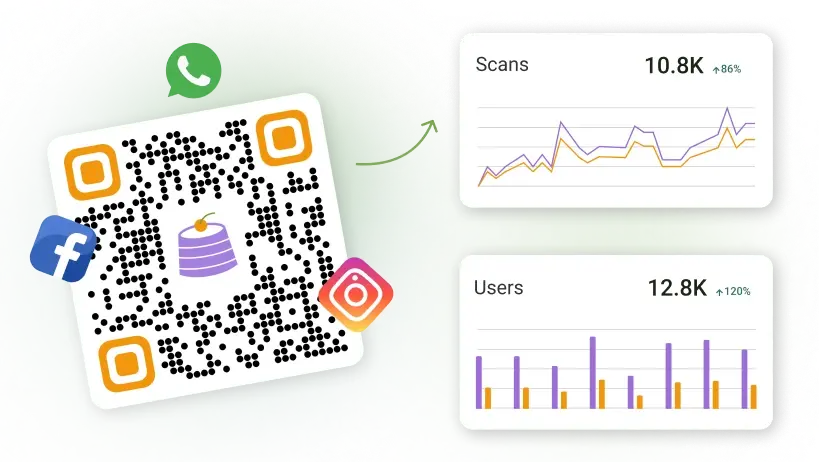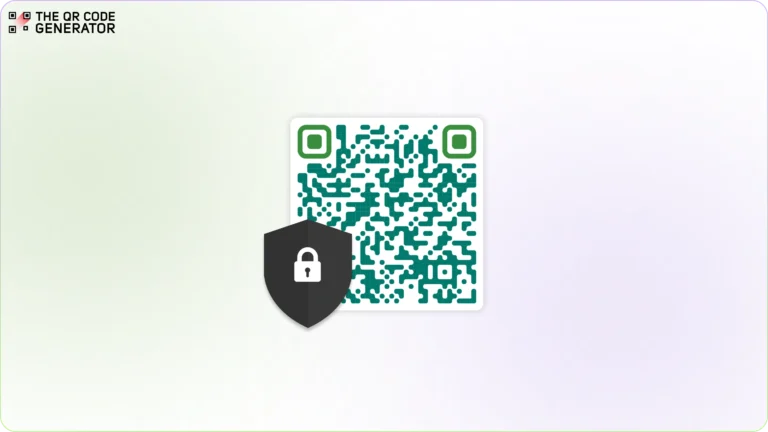QR Codes play a significant part in many organizations’ marketing and customer service efforts. In fact, 58% of companies that add QR Codes to their customer touchpoints see growth. However, despite its undeniable benefits, security remains one of the biggest challenges in QR Code adoption.
These fears are not unfounded. Quishing (QR Code phishing) attacks have increased from 0.8% in 2021 to 10.8% in 2024. These attacks put customer trust and conversion rates at stake.
This article is your tactical playbook for protecting QR Codes from being hacked across every business application. From choosing a secure QR Code generator to applying anti-tamper best practices, you’ll learn how to deploy QR Codes safely without compromising customer experience or brand reputation.
Table of contents
- Why businesses must prioritize QR Code safety
- How to ensure QR Code security for your business
- Proven practices to protect against QR Code hacking
- Ready to build customer trust with secure QR Codes?
- Frequently asked questions
Why businesses must prioritize QR Code safety
The business case for secure QR Code adoption is that these codes are now a mainstream channel for engagement, payments, and data capture. When implemented responsibly, they offer measurable value.
With 85% of brands planning to increase their investment in QR Codes, the competitive edge lies in adoption and securely doing it.
Security directly impacts brand trust
A malicious or broken QR Code experience reflects directly on your business. Customers who scan your QR Code and encounter phishing attempts or malware associate that negative experience with your brand. In fact, a survey found that losing confidential customer data is viewed as most damaging to a brand’s reputation. This underscores how security lapses can erode hard-earned trust.
User hesitation hurts engagement
Many customers now avoid scanning QR Codes due to phishing concerns, with 22% of recent phishing attacks incorporating QR Codes. This widespread caution means businesses must implement robust security measures to rebuild user confidence, or accept declining engagement rates and missed conversion opportunities.
Companies prioritizing QR Code safety can differentiate themselves by offering users the confidence to engage, turning security into a competitive advantage rather than just a defensive measure.
Compliance is essential for data protection
Industries like hospitality, retail, and education face heightened scrutiny around customer data protection. Global QR Code payments are projected to exceed $8 trillion by 2029. This makes compliance with regulations like General Data Protection Regulation (GDPR) and Payment Card Industry Data Security Standard (PCI DSS) essential for businesses handling sensitive customer information through QR Code interactions.
It is clear that QR Codes should not be an afterthought for businesses. Furthermore, strong security doesn’t have to come at the cost of user experience.
A protected QR Code experience builds user confidence, drives higher scan rates, and ensures compliance with evolving data standards, all of which translate directly into better customer retention and conversion performance.
In the next section, we’ll share a strategic playbook you can easily implement for your business.
How to ensure QR Code security for your business
Building a secure QR Code program is a coordinated effort that requires marketing, IT security, and legal teams to work together.
Marketing manages calls-to-action and user experience, IT ensures generator security and monitoring, and legal oversees data compliance. Appoint a QR Code program owner who leads collaboration across functions and enforces governance throughout all campaigns.
Step 1: Define use policies and guardrails
Start by developing a documented policy framework detailing what, where, and how QR Codes will be used across your organization.
- Identify the data points your QR Codes will capture. Such as customer contact information, purchase details, or engagement analytics, and classify them by sensitivity level.
- Define where QR Codes can appear (e.g., product packaging, print ads, event displays) and outline secure deployment requirements, such as dynamic QR Code management or expiration timelines.
- Establish acceptable risk thresholds that align with your brand’s data protection and compliance standards.
- Involve marketing, compliance, IT, and legal teams early to review data flows, approvals, and documentation procedures.
- Document these policies in your campaign governance repository or brand security manual, ensuring all stakeholders reference the same version.
This process ensures every QR Code initiative aligns with compliance standards, minimizes misuse, and gives teams a structured playbook for safe, consistent implementation.
Step 2: Select a secure QR Code generator
Choosing the right QR Code platform is critical. The tool you choose influences many things, including your business’s ability to respond quickly if an abuse or a security breach occurs.
Look for a platform that:
- Uses HTTPS encryption to protect scan data: Ensures every scan connects to a verified, encrypted source and reassures users that the link is legitimate and safe.
- Has a transparent privacy policy aligned with GDPR: Demonstrates accountability and builds confidence that customer data won’t be misused or shared.
- Supports dynamic QR Codes: Allows instant updates or link deactivation without reprinting, which improves security.
- Provides real‑time analytics of scans and activity: Helps track performance and spot anomalies.
- Offers export formats (PNG, SVG, EPS) for high‑quality printing. Maintains visual clarity and scan reliability across marketing materials, ensuring consistent user experiences.
Why this matters: Selecting a secure generator prevents phishing and other fraud risks tied to QR Codes, ensuring your brand remains trustworthy and your users safe.
| With The QR Code Generator (TQRCG), you gain detailed scan analytics and security features. You have complete control over QR Code campaigns while keeping customer data secure. Create your two forever free and secure QR Codes today! |
Step 3: Design and print with security in mind
Visual trust elements are essential. Incorporate your brand logo, short URLs, and clear call-to-action text near the QR Code to help users verify authenticity.
Use the correct QR Code format, such as PNG and SVG, to ensure crisp printing across materials and lighting conditions, reducing scanning errors and customer frustration.
For sensitive uses, such as payment points, apply tamper-evident stickers with holographic overlays or void patterns. These materials reveal unauthorized replacements and protect your QR Codes.
Step 4: Establish placement and lifecycle controls
The essential safety measures for your QR Codes start after they have been created. These are some of the best practices that you need to set up for your QR Codes:
- Create a placement matrix to define approved environments, such as indoor vs. outdoor use. For example, QR Codes should be removed from street signage at night or after events. Prioritize secure and well‑lit areas for posters to deter tampering.
- Set a review cadence based on QR Code purpose. Ideally, it should be daily for high‑turnover use cases like POS or payments and weekly for static assets such as posters or brochures. Regular inspections prevent outdated or replaced codes from being misused.
- Implement a versioning strategy using campaign identifiers (e.g., UTM tags, dynamic destinations per campaign). This helps you track performance, control content updates, and retire expired campaigns cleanly.
Step 4: Monitor scan behavior and detect anomalies
Security doesn’t end after printing. Use your QR Code generator’s analytics to track:
- Scans per hour/day
- Geographic distribution
- Device diversity
- Conversion and bounce rates
- Sudden spikes or drops in activity
Implement alerts for anomalies such as unexpected geographic scan surges or frequent 404 errors. Platforms like The QR Code Generator (TQRCG) provide extensive analytics for their trackable QR Codes to ensure your team can quickly detect abuse.
Step 5: Prepare a clear and rapid incident response
Prepare for incidents by defining protocols for:
- Immediate disabling or rerouting of compromised dynamic QR Codes.
- Redirecting users to explanatory, secure landing pages rather than broken links.
- Quickly notifying security, legal, and communication teams.
- Transparent customer communications advising caution without panic.
Review and update these protocols regularly based on lessons learned. The ability to react promptly can minimize damage and preserve customer trust.
Secure QR Code program implementation table for businesses
By implementing the following steps, you can ensure the safe usage of QR Codes by your team and your customers while staying ahead of quishing threats.
| Category | Key actions | Status |
| Policy & planning | Define use cases, data policies, and appoint a program owner | [Not started] |
| Platform selection | Choose an HTTPS-enabled platform with dynamic codes and analytics | [Not started] |
| Design & security | Brand integration, high-resolution formats, and tamper-evident features for payments | [Not started] |
| Deployment | Secure placement, environmental assessment, and campaign tracking setup | [Not started] |
| Monitoring | Track KPIs, set alerts, monitor errors, and audit logs | [Not started] |
| Incident response | Rapid disable/redirect process, notification protocol, and customer communication plan | [Not started] |
Now, let us look at some additional best practices to safeguard your QR Codes.
Proven practices to protect against QR Code hacking
Once you’ve set internal policies and lifecycle safeguards, it’s time to focus on day‑to‑day protection. These practical measures help you maintain secure campaigns, prevent tampering, and build user trust.
Verify compliance credentials
Ensure your QR Code platform follows industry security standards. If you handle customer data, look for certifications such as SOC 2, GDPR compliance, or ISO 27002:2022. If handling sensitive information such as payments or health data, look for advanced protections such as HIPAA readiness.
Choose dynamic QR Codes
Dynamic QR Codes allow you to update or disable the codes if misuse or tampering is detected. This gives you crucial control over your QR Codes, which static QR Codes lack. You can redirect users to a safe landing page instead of exposing them to malicious links. Dynamic codes also provide analytics that help you track suspicious activity over time.
Always add clear CTAs
Customers hesitate to scan when they’re unsure what will happen. Always pair your QR Code with transparent messaging such as “Scan to view menu” or “Scan to give feedback.” This builds trust and helps filter out malicious QR Codes because users learn to expect clarity.
Train your frontline staff
Train your staff to look for signs of tampering, such as stickers placed on top of original codes, mismatched branding, or sudden user complaints about scans. Provide a simple escalation process so issues are reported quickly, and encourage staff to reassure customers about safe scanning practices.
Avoid risky downloads
Forcing users to download apps or files creates unnecessary risk. Link directly to web‑based experiences instead of APKs or file transfers whenever possible. If an app download is required, make it clear with a trusted call‑to‑action or branding cue, including the verified app logo. Moreover, always ensure the file is digitally signed and hosted on a secure domain.
Monitor scanning activity
Set automated alerts for red flags like sudden geographic spikes, scans happening at unusual hours, or volumes that don’t match campaign expectations. Early detection allows you to disable compromised codes before they affect many users.
Prepare crisis communication
Even strong security setups can encounter incidents. Prepare a clear communication plan with pre-approved templates for emails, social posts, and in-store signage. If a compromise occurs, you can immediately update customers and redirect them to safe resources.
Ready to build customer trust with secure QR Codes?
As QR Code adoption grows, so do the risks. Security lapses can erode trust and even expose businesses to compliance challenges. But the good news is that protecting your QR Codes doesn’t have to be complicated. By following a structured approach, you can safeguard both your customers and your brand.
Implementing the proper steps not only prevents hacking and misuse but also builds confidence in every interaction. Customers are more likely to scan and engage when they know your QR Codes are secure and reliable.
Take control of your QR Code program today by using tools like TQRCG to implement secure, dynamic codes that never expire. With the right strategy, every QR Code you deploy becomes an opportunity to strengthen customer trust and drive business growth.
Want to design secure QR Codes that build trust? Sign up and start free with TQRCG and get two dynamic codes that never expire.
Frequently asked questions
The QR Code itself cannot be hacked, but the destination it links to can be compromised. Attackers usually replace legitimate codes with malicious ones or hack the websites they point to, rather than altering the QR Code structure.
Retail, hospitality, healthcare, and financial services face the highest risks because of frequent customer interactions and sensitive data handling.
Use tamper-evident stickers with void patterns or holographic overlays. Place QR Codes in monitored, high-visibility areas and train staff to check for suspicious replacements. Dynamic QR Codes add another layer of protection since they can be updated or disabled if tampering is detected.
Free QR Code generators may insert hidden redirects, show ads, or create QR Codes that expire without notice. They typically lack essential security features and may collect user data without transparency.
Dynamic QR Codes are safer because they allow you to update or disable destinations instantly, track detailed analytics, and maintain control without reprinting physical materials.
Malicious redirects or broken scans frustrate customers and reduce trust. In regulated industries, they can also expose businesses to compliance violations or legal liability.
Immediately disable or redirect the QR Code, investigate scan logs to assess the scope, and communicate clearly with affected users. Follow up with a review of security gaps and update processes to prevent future incidents.
Use consistent branding and HTTPS-secure destinations, add clear call-to-action text explaining the outcome, and display security certifications where relevant. Educating customers about your practices across multiple channels also reinforces confidence.







